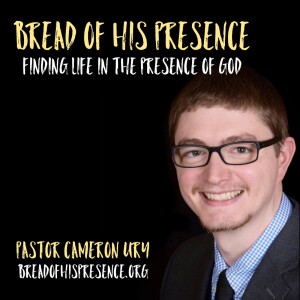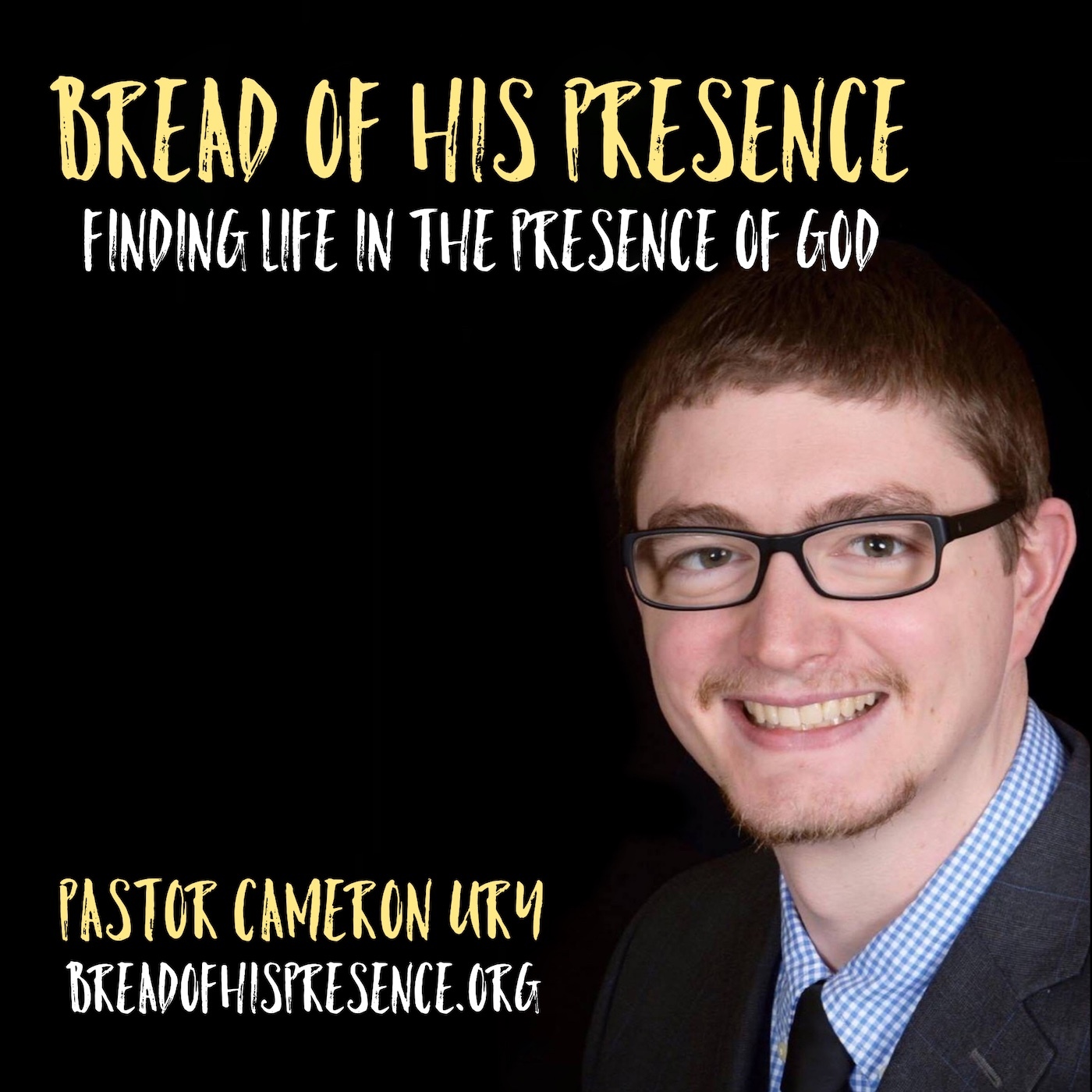Episodes

Sunday Jan 10, 2021
Lechem Panim #134 "Evidence That Stood" (Acts 4:8-14) Pastor Cameron Ury
Sunday Jan 10, 2021
Sunday Jan 10, 2021
Hello, and welcome to Lechem Panim. In recent weeks we have been discussing Acts chapter 4; a marvelous chapter in which Peter and John heal a crippled beggar outside of the Temple in Jerusalem. And everyone is captivated and eager to learn from them the means by which this man was healed; and so Peter and John explain that it is by the power of Jesus that this man was healed. And that prompts a very negative reaction from the religious leaders, who seize Peter and John, hold them for the night, and them make them stand on trial before the Sanhedrin, the very council that was responsible for condemning their Rabbi (Jesus) to death not long before this. And they pointedly ask/demand of them the answer to a question, which is given to us in verse 7. It says…
Acts 4:7 (ESV)— 7 And when they had set them in the midst, they inquired, “By what power or by what name did you do this?”
By God or Satan?— And the reason they ask this is because they don’t know if this is a miracle done by an evil power or a good one. If it was as work of God or a work of Satan. And (when you think about that) don’t you find that rather sad? I mean to think that these guys are the spiritual leaders of Israel; and yet apparently they have become so spiritually blind that they cannot even distinguish between a miracle of God and a miracle of Satan. Having noted that Peter and John had been with Jesus (which we see in verse 13), they should have been able to recognize that this was the same power and authority that Jesus had Himself demonstrated throughout the course of His ministry. And Jesus did things that only God could do (or someone working for God), so they should have recognized that this miracle as also having come from God. But, having been blind to the source of Jesus’ miracles (often willingly), it is no surprise they are here blind to the source of Peter’s and John’s as well. But Peter declares it boldly. It says in…
Acts 4:8-12 (ESV)— 8 Then Peter, filled with the Holy Spirit, said to them, “Rulers of the people and elders, 9 if we are being examined today concerning a good deed done to a crippled man, by what means this man has been healed, 10 let it be known to all of you and to all the people of Israel that by the name of Jesus Christ of Nazareth, whom you crucified, whom God raised from the dead—by him this man is standing before you well. 11 This Jesus is the stone that was rejected by you, the builders, which has become the cornerstone. 12 And there is salvation in no one else, for there is no other name under heaven given among men by which we must be saved.”
Peter’s Hutzpah— Now in studying this passage, I was amazed at the Hutzpah here of Peter. I mean Peter had not long before this (out of fear) denied three times that he even knew Jesus. And yet here (before the very council that condemned Jesus; the chief leaders of whom were Sadducees and therefore denied that there even is a resurrection and an afterlife) Peter was willing to respectfully yet forcefully declare their guilt in having killed the Messiah and to declare (basically) that their whole theology about the resurrection was wrong and that Jesus (the One they crucified) has not only been raised, but is their only Way of salvation. And it is clear from verse 8 that this boldness and fearlessness came directly from the Holy Spirit. It was the Holy Spirit who wrought the greatest transformation in Peter and was now empowering His messages. And you know, if we are to have that same boldness, it doesn’t matter how many speaking seminars or witnessing books we read; what is going to give our message authority and power is the anointing of the Holy Spirit. The Holy Spirit is the One who gives us understanding and who moves in the hearts of those we are witnessing to, bringing conviction and (hopefully) change.
Peter’s War Cry— Now the members of the Sanhedrin (like many in the crowd) had no doubt seen this crippled man many times. They had no doubt even given him alms or perhaps even piously prayed for or even over him. He was a common fixture there at the temple Gate Beautiful. But now (apparently) he’s right there in the courtroom with Peter and John (as verse 10 seems to indicate); a living testimony so to speak. You might say Peter and John’s testimony stood. And Peter declares that it is through the power of Jesus Christ of Nazareth, whom they crucified and whom God raised from the dead that this man is standing before them (v.10). And considering what their beliefs were and what they had done to Jesus only a short time before this, just think about how these words must have pierced and convicted the hearts of these Jewish leaders. They had thought that when they killed Jesus, they were finished hearing about this small-time prophet from the back hills of nowhere (which is what Nazareth was). But now two of His disciples are standing before them in all the might and power of their Rabbi Jesus, declaring to them (and all the people) that Jesus is alive! I mean, these guys (the Sadducees) reject the resurrection. And so on two fronts Peter’s declaration must have sounded to them like a declaration of war! “You killed the Messiah, but then God raised Him.” And in saying this, Peter is also implying that they had set themselves against God Himself.
The Rejected Rock— Now after this Peter (as he always does) starts quoting the Old Testament, this time from Psalm 118:2 when he says This Jesus is the stone that was rejected by you, the builders, which has become the cornerstone. (v.11) And this is a messianic reference, one which Jesus Himself quoted in Matthew 21:42 (and which Peter uses again later in 1 Peter 2:4-8). And [They knew that the “Rock” was a symbol of God {Himself} (Deut. 32:4, 15, 18, 31; 2 Sam. 22:2; Ps. 18:2; Isa. 28:16), and that the prophet Daniel had used the rock to picture the Messiah and the coming of His kingdom on earth (Dan. 2:31–45).] And so Peter is using imagery that they were familiar with; and he interprets the Psalm for them. They (the members of the council) were “the builders” and Jesus (the Son of God) was God’s Stone that they had rejected. They had stumbled over the Rock (Rom. 9:32; 1 Cor. 1:23) and rejected Him, just as Psalm 118:22 had predicted. And yet that rock (for those who have trusted in Him; in Jesus) that rock has become the chief Cornerstone (1 Peter 2:4–8, Eph. 2:20); the very source of Salvation itself (as Peter declares in verse 12).
A “WHOLE” Salvation— And this healing of the beggar was a picture of that, which Peter indicates. He says in verse 9 that the man was “made whole”, which in Greek is the word σῴζω (literally meaning “saved”) which is the foundation for the word he uses for salvation in verse 12 (σωτηρία). And this is very Jewish, because the Jews saw a [human being as a psychosomatic unity, an indivisible amalgam of body and soul in which if either goes wrong, the other is affected.] This is why [the Greek verb sozo was used in Jesus' day to mean both ""to save"" and ""to heal,"" and soter could signify either ""savior"" or “”physician.""] And that fits Jesus so perfectly. He is our Savior and our Great Physician. And as such, He and He alone can heal mankind of its greatest disease, the sickness of sin (Mark 2:14–17), which Peter highlights when he says in verse 12: 12 And there is salvation in no one else, for there is no other name under heaven given among men by which we must be saved.” And you’ll remember Jesus’ own words in…
John 14:6 (ESV)— 6 Jesus said to him, “I am the way, and the truth, and the life. No one comes to the Father except through me.
The Life— Jesus is Life itself; He’s not just living or life-giving. No, He is the source of all life; He is Life. And therefore there can’t be salvation in anyone else. To choose Jesus is to choose life. To reject Jesus is to reject life. It’s that simple. And Peter is very clear on this, which is why he says in verse 12: there is salvation in no one else,
Acts 4:13-14 (ESV)— 13 Now when they saw the boldness of Peter and John, and perceived that they were uneducated, common men, they were astonished. And they recognized that they had been with Jesus. 14 But seeing the man who was healed standing beside them, they had nothing to say in opposition.
It’s A Trap!!!— You see, they recognized that they were “trapped.” Either way they approach this, they lose. They couldn’t deny the miracle (which would be tough to do with the man standing right there in front of them; a man everyone knew had been lame since birth; whose legs and even his mental capacity to walk had never developed; and therefore could not be healed any other way). Neither could they explain how these (the text says) “uneducated, common men” could perform such a miracle. They weren’t mighty Rabbis (at least by the standards of the Sadducees) and certainly didn’t have the backing of the Jewish authorities as ministers and scribes. They were simple fishermen from an unholy place (Galilee; known as Galilee of the Gentiles) whose only qualification on their resume was that they had been with Jesus. Now the council could say that the miracle they performed was powered by Satan, but the problem is that false prophets and workers of demonic miracles always seek to undermine the Word of God, something that Peter and John were clearly not doing. In both sermons that Peter has preached, we find Peter preaching straight from the Word of God (in context), using the Old Testament [to support and explain his claims, {which}… is one evidence of a true prophet of God (Deut. 13:1–5; Isa. 8:20).] He is standing on, not undermining the Old Testament. And the Sanhedrin doesn’t know what to do. The miracle, coupled with what Peter and John were saying, was clear [evidence that Jesus Christ was alive and at work in the church by His Holy Spirit.] And yet (as we will continue to see as we proceed) these Jewish leaders continue to choose to look away; away from the sign; away from the evidence; even a piece of evidence that could not only speak, but stood (literally) in their presence, bearing testimony to them of Jesus.
The Mundane Miracles— You know, the thing that bothers me the most about both myself and our culture is how completely oblivious we so often are to the magnificent power of God moving in our midst. There is so much we take for granted. And some intentionally look away for the same reason the Sanhedrin looked away. Others are like me; we have just become so desensitized to the mundane, everyday miracles. I was reading in bed with my kids the other night a devotional book; and in that devotional book the author was talking about the development of the eye in an unborn child and how the optic nerve slowly moves from the eye towards the brain while at the same time the optic nerve is growing from the brain towards the eye. And the end of each of those nerves growing towards one another contains 2 million connection points, all of which have to match up perfectly. And when the two ends of that optic nerve meet, all the connections somehow manage to find their way to each other. It’s funny, I was taking a parishioner to his eye appointment this past week. And I told him this. And he and I sort of laughed together. We just thought that it is so funny how often we complain when things go bad, never realizing the miracle in their ever having worked at all. What evidence is there of the presence of Jesus in your life? Are you overlooking the miracles He has worked in and through you? Maybe this year, the challenge we can take from this passage is simply to look; to truly see and acknowledge what God has done for us, even in the mundane everyday miracles that you and I take for granted. Because if we can do that, I think we will recapture the awe of what it means to know in Jesus the One who is both our Creator and (as with this man) also our Re-Creator as well. Let’s commit to look. Amen.


Comments (0)
To leave or reply to comments, please download free Podbean or
No Comments
To leave or reply to comments,
please download free Podbean App.